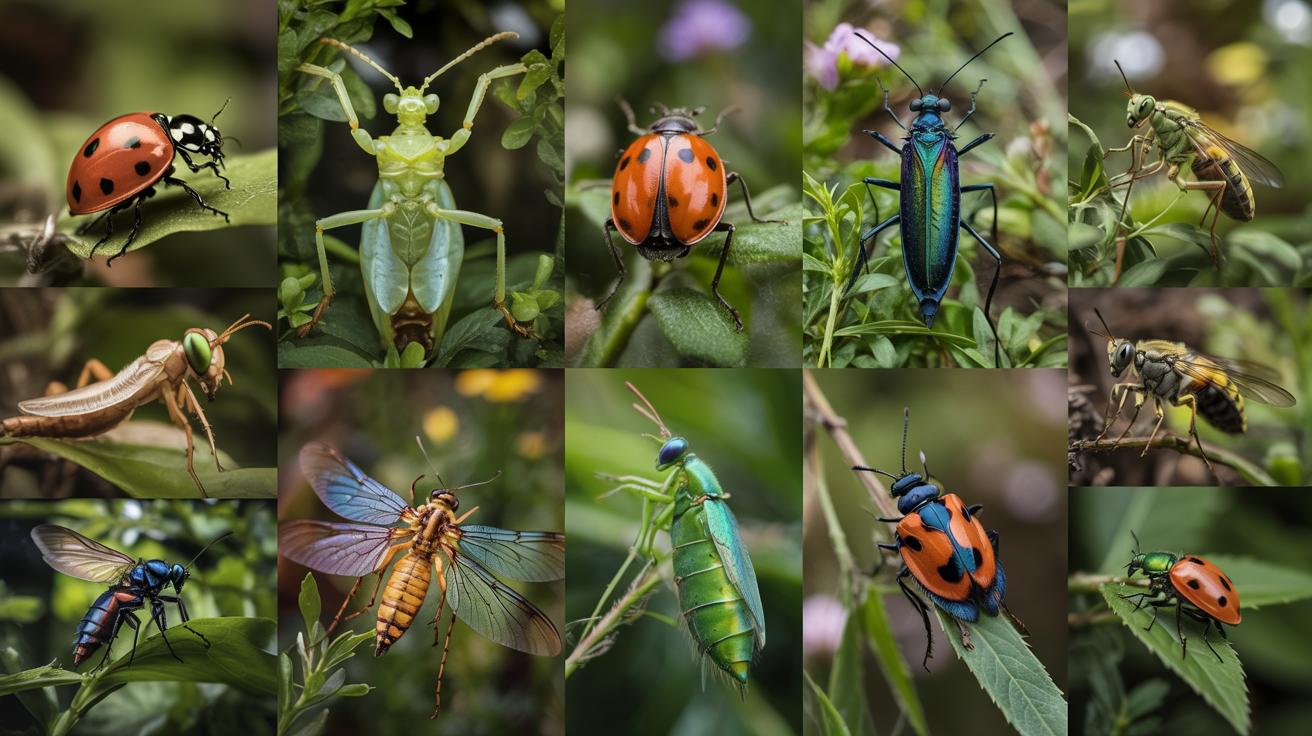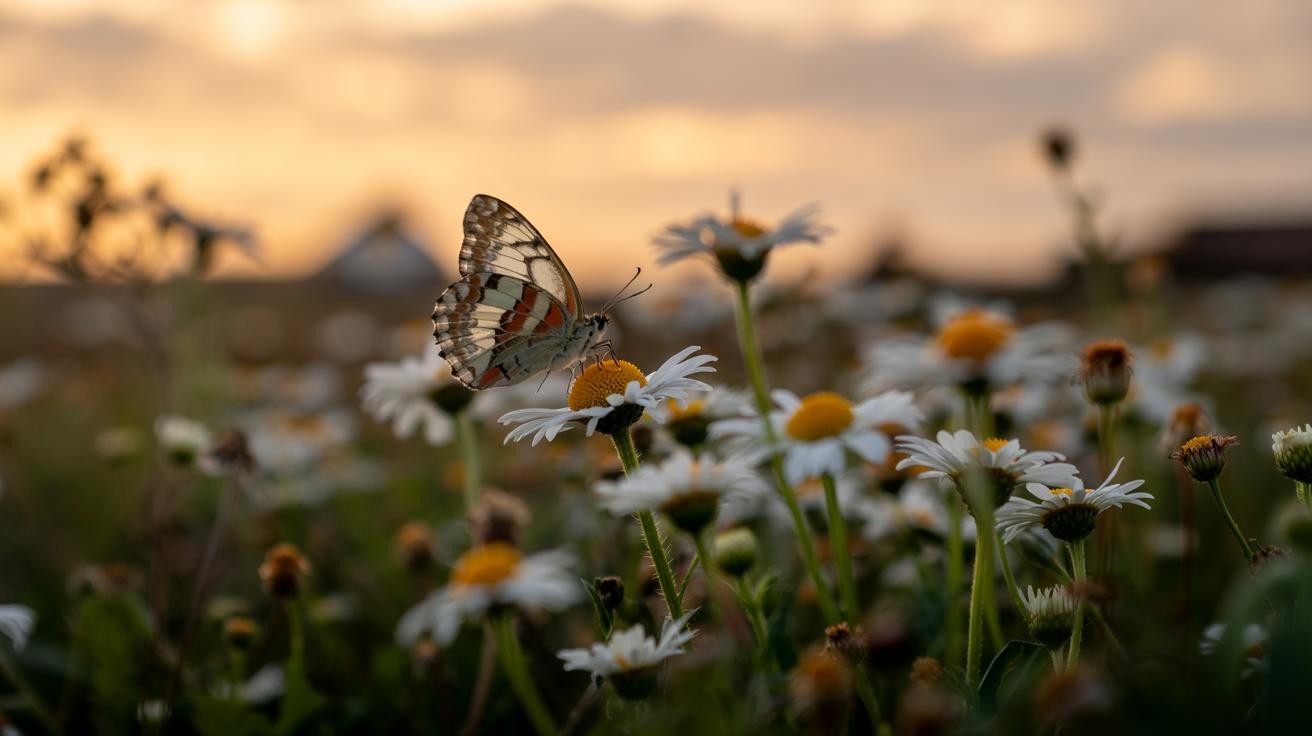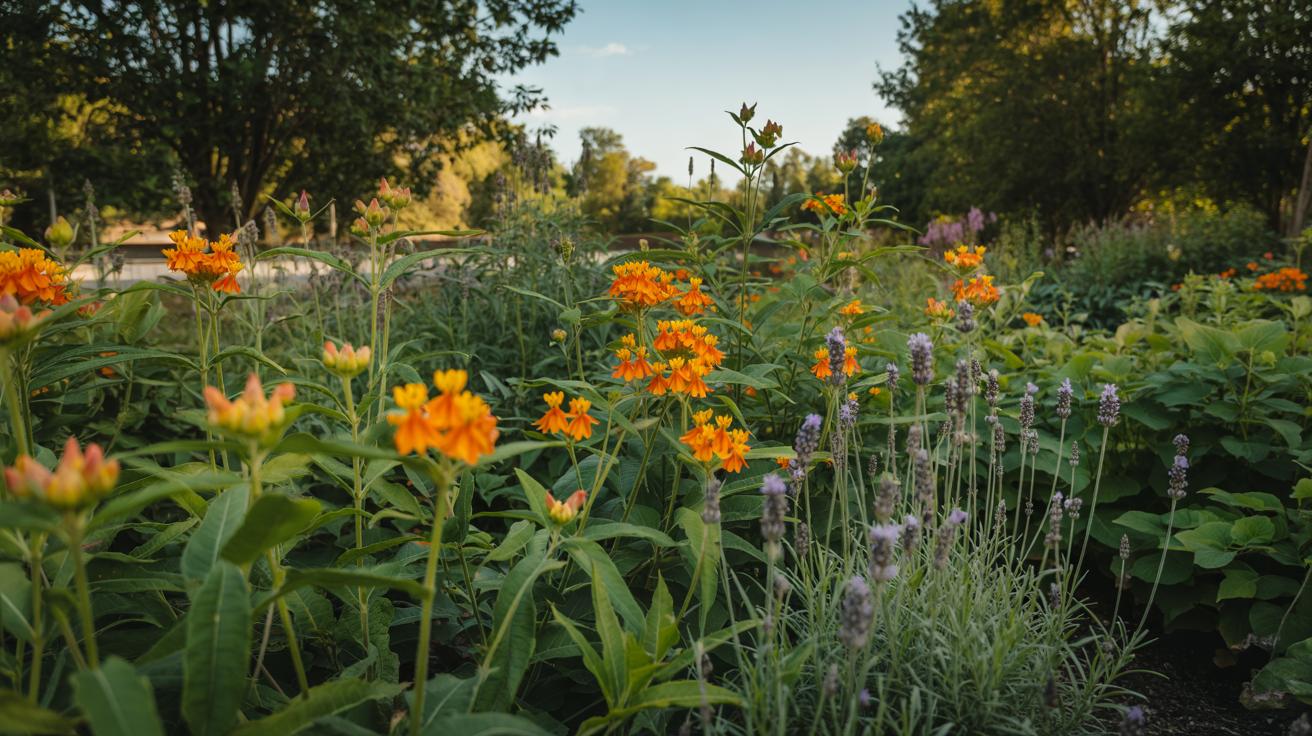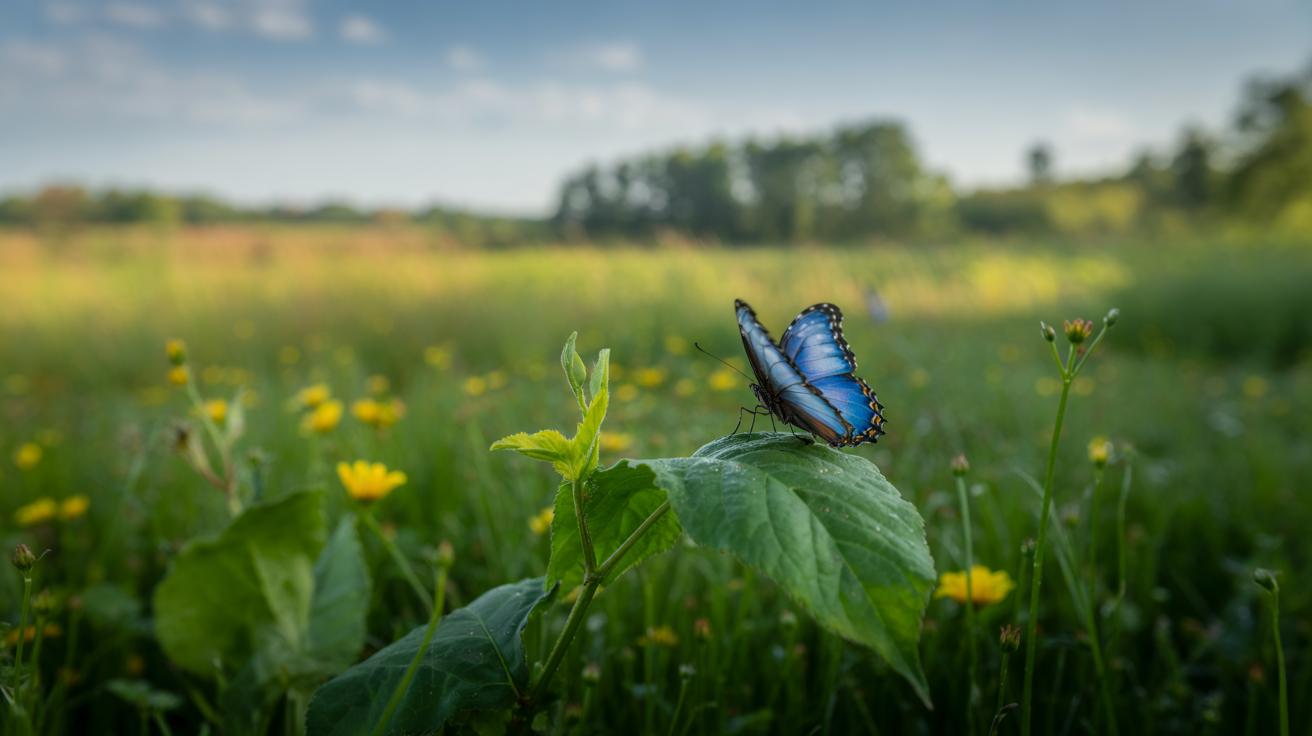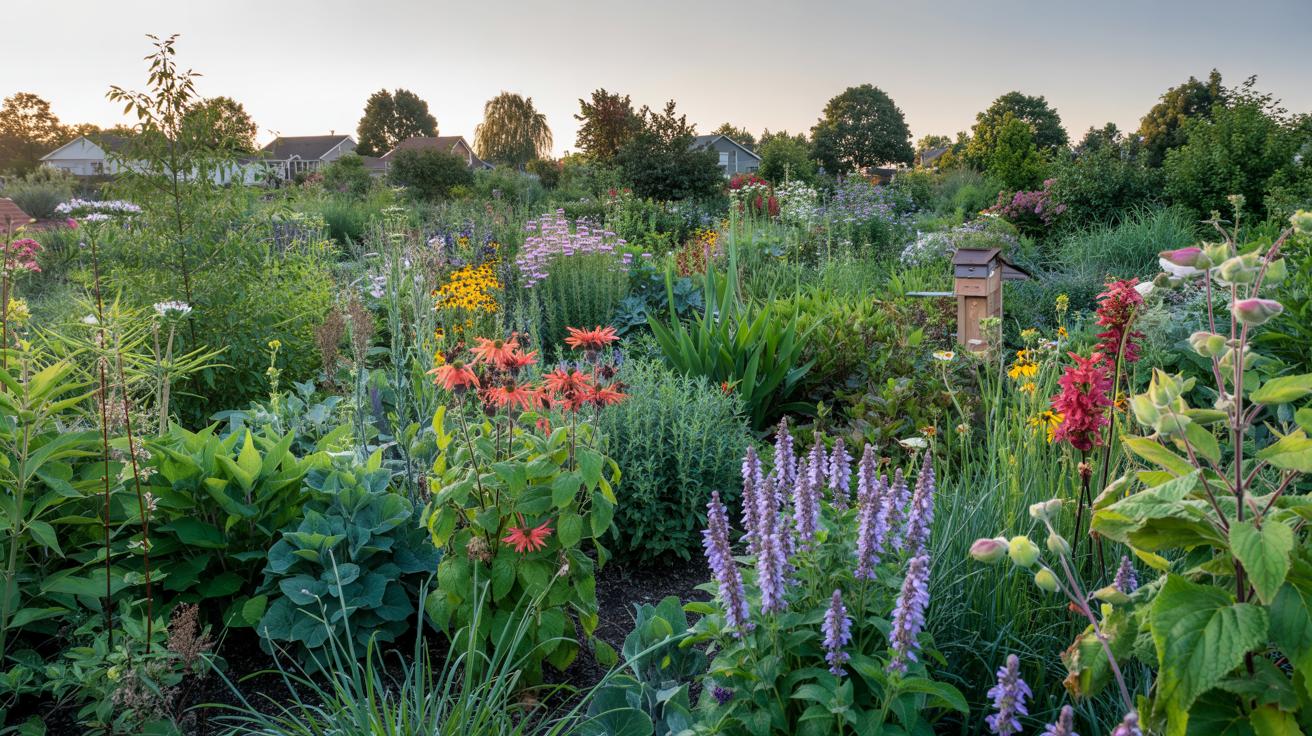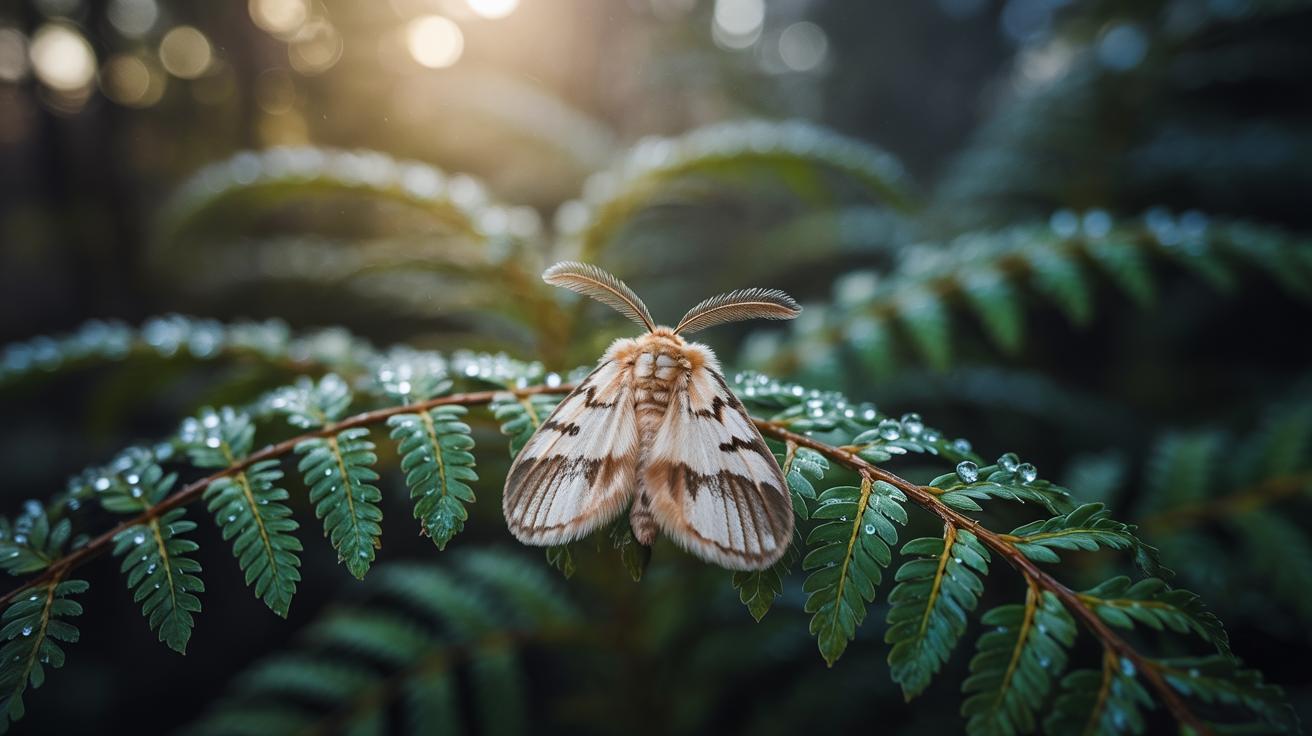Introduction
Have you ever noticed the small creatures buzzing, crawling, or flying in your backyard? Many of these bugs play essential roles in keeping your garden and backyard healthy and lively. They are not just pests; they are the foundation of backyard ecology. Understanding these bugs can help you appreciate their presence and the benefits they bring.
Your backyard is like a complex, tiny ecosystem where bugs contribute in various ways, from pollination to soil health. This article will introduce you to 10 fascinating bugs that transform your backyard ecology. Knowing about these insects can guide you in creating a better environment for them, which benefits your entire garden.
Ladybugs as Natural Pest Controllers
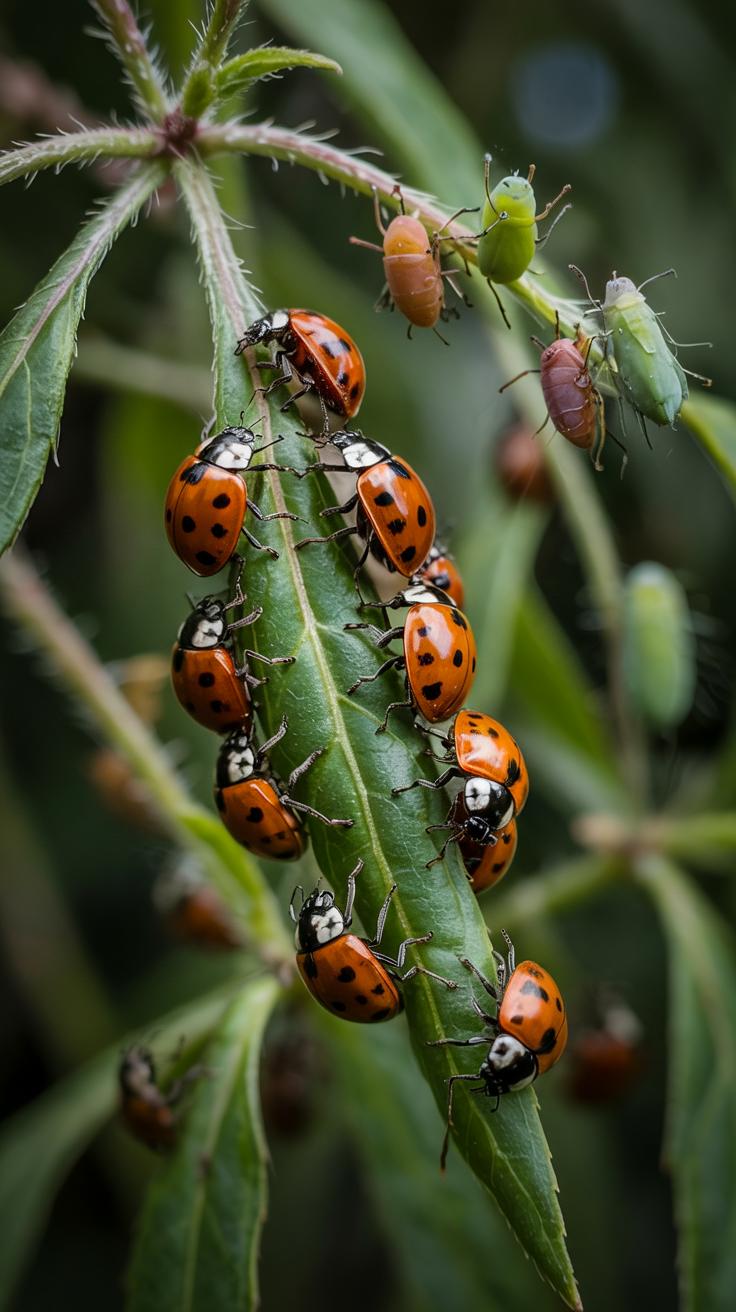
Ladybugs help keep your backyard plants healthy by eating harmful insects like aphids. Aphids feed on plant sap, causing leaves to curl and weaken. Ladybugs hunt them down, reducing these pests without the use of chemical sprays. This natural pest control protects your plants and supports the ecosystem.
You might notice ladybugs feeding on scale insects and mite populations too. These feeding habits stop infestations before they grow large. Without pest pressure, plants grow stronger and can produce more flowers and fruits. Encouraging ladybugs means fewer interventions and a safer backyard environment for everyone.
Feeding Habits and Benefits
Ladybugs mainly feed on aphids, small insects that damage new growth by sucking plant juices. They also consume whiteflies, scale insects, and spider mites that harm leaves and stems. A single ladybug can eat dozens of aphids a day, controlling pest populations naturally.
By feeding on these pests, ladybugs prevent diseases spread by insects and keep plants from becoming stressed. Healthy plants can fight off other problems more easily and require less watering and fertilizer. Think about how much effort you save when ladybugs manage the pests for you.
Encouraging Ladybugs in Your Backyard
You can attract ladybugs by planting flowers that provide nectar and pollen, such as marigolds, dill, and yarrow. These plants offer food sources for adult ladybugs and encourage them to stay. Avoid spraying pesticides, which kill ladybugs and their prey alike.
Leaving some leafy shrubs and ground cover helps create shelter for ladybugs to lay eggs and overwinter. If you spot ladybugs nearby, gently move them into your garden instead of buying them commercially. By providing food and safe habitats, you support a natural pest control team in your backyard.
Praying Mantises as Ambush Predators
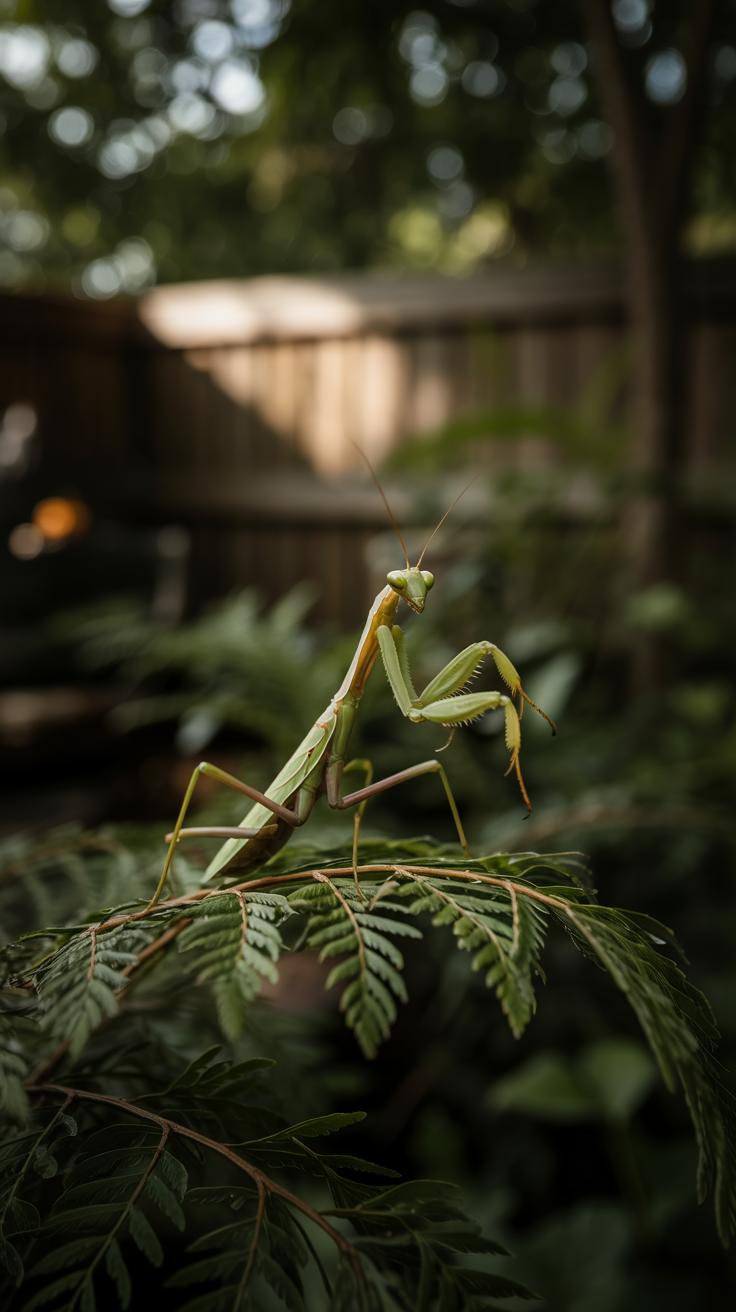
Praying mantises play a key role in keeping insect populations in check within your backyard. They remain still, blending into their surroundings, waiting patiently to catch prey. Their presence helps manage pests that can damage plants, which supports a natural balance without using chemicals.
These insects target a wide range of bugs, including flies, moths, caterpillars, and even small grasshoppers. Their hunting reduces the number of harmful insects, making your garden healthier and more vibrant. Have you ever noticed a mantis perfectly still for minutes before striking? That’s their method of ambush hunting at work.
Because mantises consume many types of insects, they act as natural pest controllers that work alongside other beneficial bugs in your backyard. Inviting them to your garden supports this ecological harmony and helps reduce the need for external pest control measures.
Hunting and Prey
Praying mantises use a sit-and-wait approach to catch food. They stay motionless on plants or flowers until unsuspecting prey comes close. Quick reflexes allow them to snatch prey with their front legs, which are equipped with spines to hold tight.
The variety of prey mantises eat is broad. They hunt flies, crickets, beetles, and even other insects like butterflies or bees. This wide diet helps control many insect species that could otherwise harm your plants.
Their keen eyesight lets mantises spot movement up to 20 feet away. They also rotate their heads, a rare ability for insects, allowing better focus on targets before striking. Have you ever seen one turn its head slowly and then strike suddenly? It’s a precise hunter.
How to Support Mantises at Home
Creating a welcoming habitat for praying mantises increases their chance to thrive in your garden. They prefer tall grasses, shrubs, and flowering plants where they can hide and hunt effectively.
Plants like dill, fennel, and cosmos attract not only mantises but also provide a good food supply by bringing in other insects. Avoiding pesticides is critical, since chemicals harm beneficial bugs like mantises.
You can also buy mantis egg cases and place them in sheltered spots to encourage their population. Wondering how to keep these hunters in your backyard year after year? Focus on diverse plantings and natural shelter to provide a safe environment for their whole life cycle.
Beetles and Their Impact on Soil Health
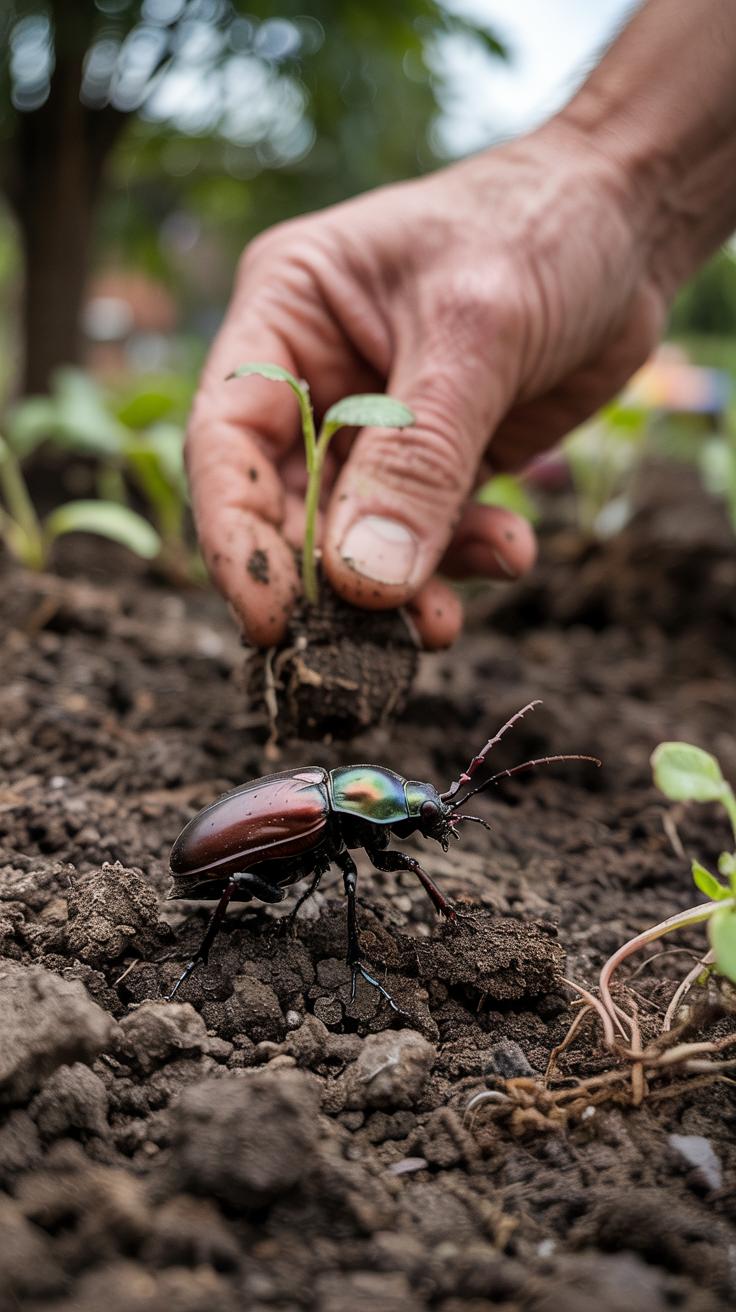
Beetles play a key role in keeping your backyard soil healthy. They burrow and move through the ground, which helps air reach plant roots. This process, called soil aeration, allows water and nutrients to spread more easily. Some beetles feed on decaying leaves and dead insects, breaking them down into smaller pieces. This speeds up decomposition and releases nutrients back into the soil.
Consider a beetle like the dung beetle. It buries animal waste deep into the soil, improving fertility and helping plants grow strong. These activities improve soil texture and encourage beneficial microbes to thrive, making your garden soil rich and productive. When you support beetle populations, you boost your backyard’s natural recycling system.
Types of Beneficial Beetles
Ground beetles are one of the most helpful types you can find. They hunt pests like slugs and caterpillars that can harm plants. Their presence reduces the need for chemical pesticides. Another group is the leaf beetles, which help clean dead plant materials, promoting decomposition.
Darkling beetles also play an important role by breaking down tough organic matter, adding nutrients to the soil. Each beetle species works in its own way to support soil health. Have you noticed different beetles in your yard? Watching their behaviors can help you understand how they benefit your garden.
Soil-Friendly Gardening Practices
You can protect these vital beetle allies by avoiding harmful pesticides. Choose natural pest control methods instead. Leaving some areas of your yard undisturbed gives beetles a safe place to live and reproduce. Adding mulch or fallen leaves creates a habitat and food source for beetles.
Plant native flowers and shrubs to provide shelter and attract a variety of beneficial insects. Water your garden wisely to keep the soil moist but not soggy, which supports beetle activity. How could you change your gardening routine to help beetles thrive? Simple actions can lead to stronger soil and healthier plants.
Dragonflies as Mosquito Controllers
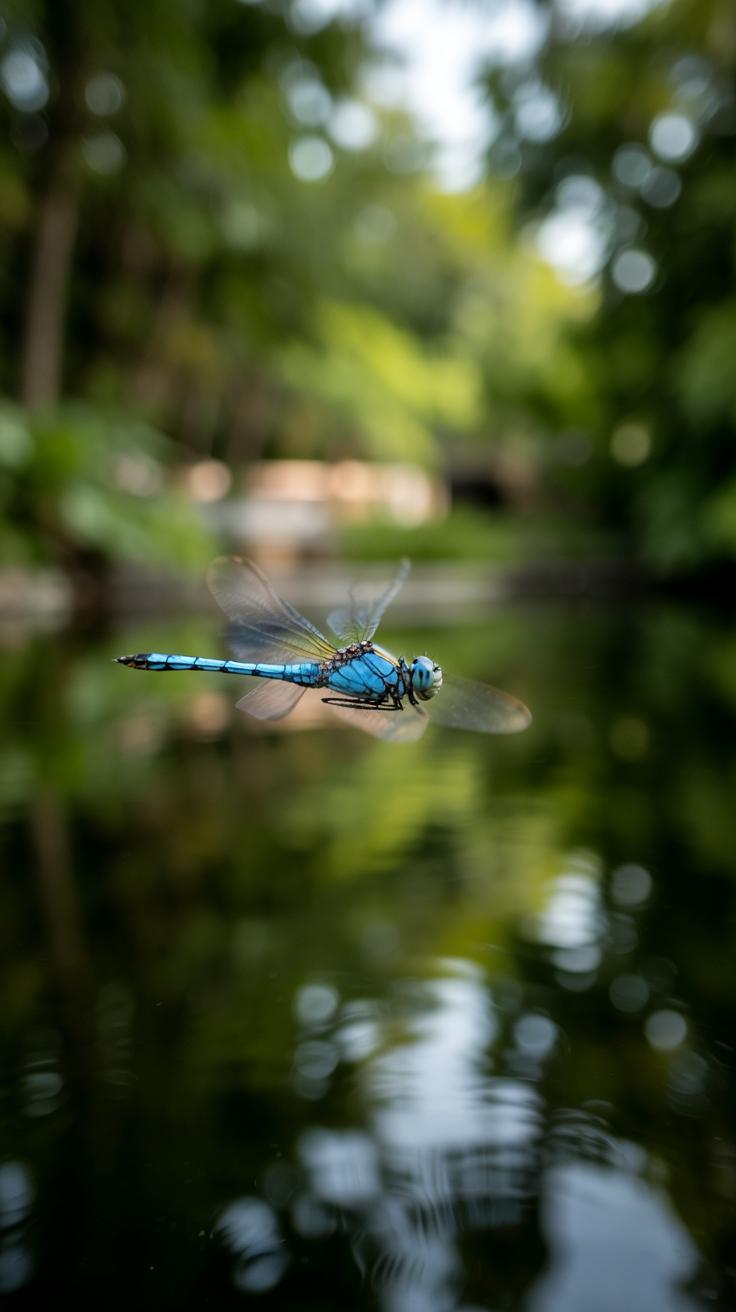
The presence of dragonflies in your backyard can greatly reduce mosquito populations. These insects eat mosquitoes at every stage of their life, making your outdoor space more comfortable and safer for both people and pets. By naturally cutting down on mosquitoes, dragonflies help limit the spread of mosquito-borne diseases.
Dragonflies hunt mosquitoes with precision and speed. Adults catch mosquitoes mid-flight, while their larvae feed on mosquito larvae in water. Their combined efforts keep mosquito numbers under control. Having dragonflies around means fewer annoying bites and less need for chemical repellents.
Are you willing to invite more dragonflies to your backyard and create a natural defense against mosquitoes? This simple step can improve your outdoor experience significantly.
Life Cycle and Hunting Skills
Dragonflies start life as eggs laid in or near water. Soon after, eggs hatch into aquatic larvae called nymphs. These nymphs live underwater for months, sometimes years, eating mosquito larvae and other small aquatic creatures.
Dragonfly nymphs are fierce predators. They use extendable jaws to catch mosquito larvae before they become flying adults. When mature, nymphs crawl out of the water and transform into adult dragonflies.
Adults fly swiftly and catch mosquitoes in midair with sharp eyesight and strong jaws. This dual-stage hunting keeps mosquito populations low in and around backyard water features.
Creating a Dragonfly-Friendly Environment
You can attract dragonflies by building small, shallow water features like ponds or birdbaths. Ensure water is free of fish, which eat dragonfly larvae. Add native plants such as cattails or water lilies around the edges to provide shelter for larvae and resting spots for adults.
Keep water fresh by avoiding too many chemicals. Sunlight and plants encourage insects that dragonflies feed on, sustaining their population. What if you added a small pond this weekend to bring these mosquito hunters closer?
By designing your space thoughtfully, you support dragonfly life stages and create a balanced backyard ecosystem with fewer mosquitoes and more natural beauty.
Earthworms Enriching the Soil
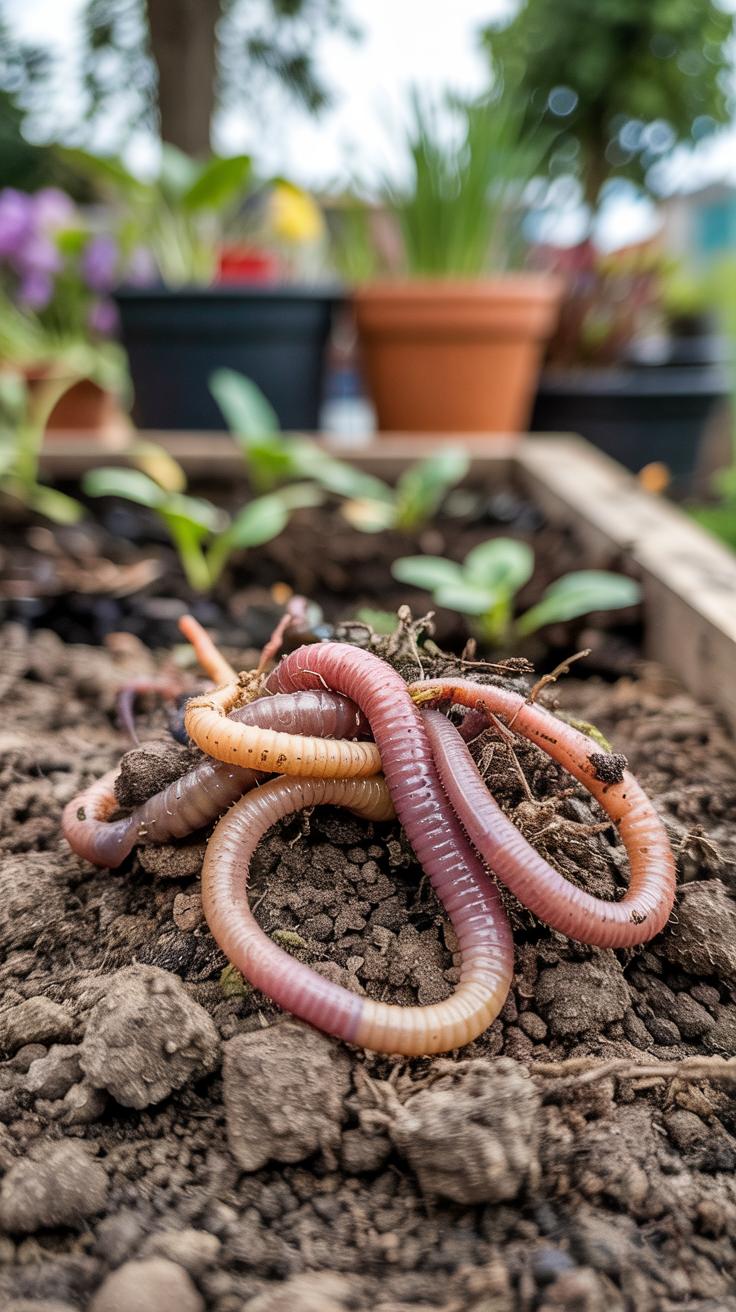
Earthworms play a key role in making your backyard soil healthy and productive. They break down dead leaves and organic matter, turning them into nutrients plants can absorb easily. As they eat, earthworms mix soil layers, which helps spread nutrients evenly. Their activity speeds up nutrient cycling, making food available to roots faster. This natural process creates rich, fertile soil that supports strong plant growth. Have you ever noticed how areas with many earthworms often have lusher plants? That’s no accident—it’s the earthworms working below ground to improve soil quality.
Soil Modification and Aeration
Earthworm burrows create tiny tunnels in the soil. These channels allow air and water to move freely, which is crucial for healthy roots. Roots use these gaps to grow deeper and access more nutrients and moisture. Without proper aeration, soil can become compacted, blocking root expansion and reducing plant health. Earthworm tunnels prevent compaction by loosening soil structure naturally. This also helps rainwater soak in better rather than running off. Does your soil feel hard after rain? Earthworms can help make it softer and easier for roots to spread.
How to Encourage Earthworm Activity
To invite more earthworms into your backyard, create conditions they like. Mulch your garden beds with leaves or straw to provide food and keep the soil moist. Avoid using harsh chemicals and synthetic fertilizers, as these harm earthworms and reduce their numbers. Composting kitchen scraps and adding organic matter enriches the soil and feeds the worms. Water your garden moderately to keep the soil damp but not waterlogged. By supporting earthworms, you build a natural system that boosts soil life and plant growth. What small change could you make today to bring earthworms back to your soil?
Bees for Backyard Pollination
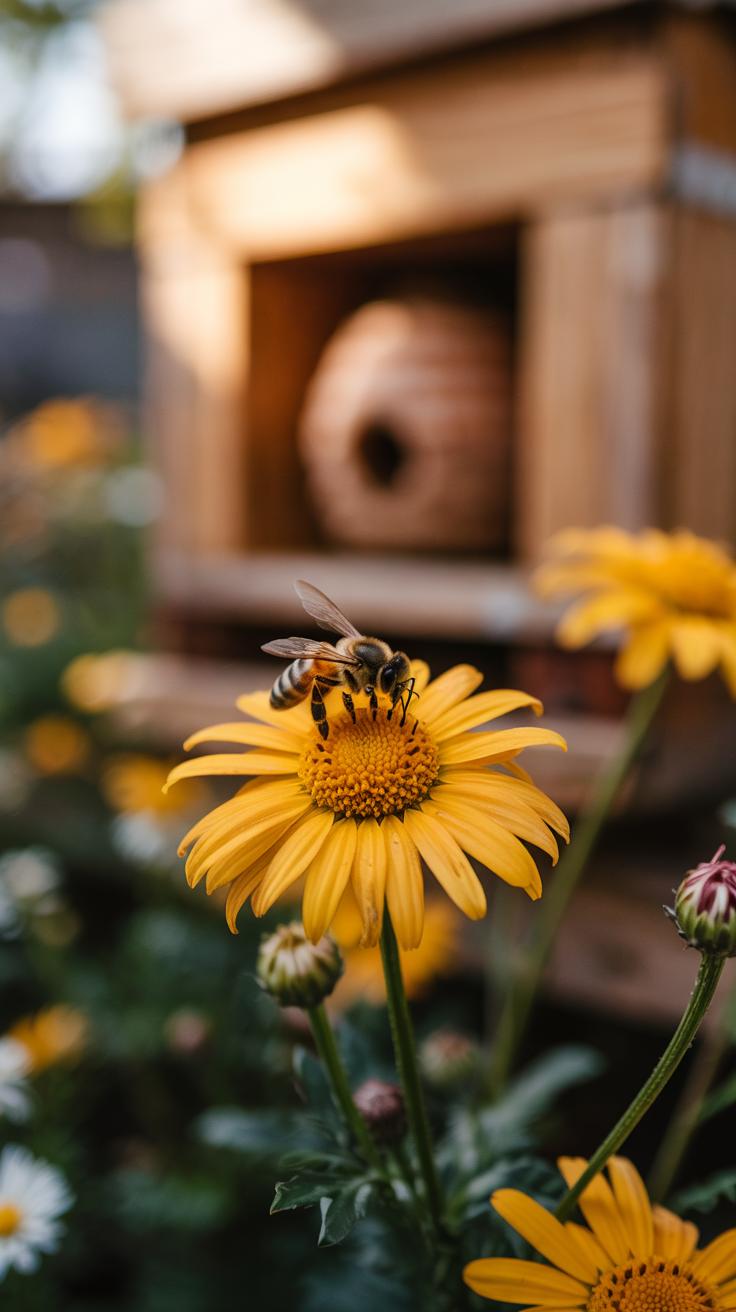
Bees play a key role in pollinating your backyard plants. They transfer pollen from flower to flower, helping plants make seeds and fruit. This process supports the growth of many fruits and vegetables you might want to grow.
Pollination by bees also promotes biodiversity. It helps native plants survive and spread, which supports other wildlife like birds and insects. When your backyard is full of flowering plants, bees keep busy, improving plant health and yields.
Have you noticed how some flowers attract more bees? That’s because bees often prefer certain plants. By supporting bees, you help your garden flourish naturally, without needing extra chemicals or tools. Your backyard becomes a small ecosystem where plants and pollinators work together for food and survival.
Diversity of Bees and Their Pollination
Bees come in many types, not just the honeybee. Bumblebees, mason bees, and sweat bees each visit different flowers. Some prefer open flowers, while others like tube-shaped ones. Their varied preferences improve pollination across many plant varieties in your backyard.
Bumblebees are good at “buzz pollination,” shaking pollen loose from flowers like tomatoes. Mason bees are efficient early spring pollinators, visiting cherry and apple blossoms. Sweat bees often pollinate wildflowers and weeds, helping maintain plant diversity.
Which bee species visit your yard? Observing them helps you understand the needs of your plants. Different bees working together mean more flowers get pollinated and more food grows for you and local wildlife.
Supporting Bee Populations
You can help bee populations stay healthy by planting native flowers in your yard. Native plants adapt well to your local climate and provide the right nectar and pollen bees need. Examples include coneflowers, goldenrod, and black-eyed Susans.
Offering clean water sources is also important. Place a shallow dish with water and stones for bees to land on. This gives them a safe spot to drink, especially in dry weather.
Think about your yard as a home for bees. Avoid pesticides and leave some areas with natural plants and mulch. Small actions like these can create a safe environment where bees thrive, ensuring your plants keep getting pollinated year after year.
Fireflies Adding Beauty and Warning Signals

Fireflies light up warm summer evenings with their glowing signals. Their bioluminescence happens through a chemical reaction inside their bodies that produces light without heat. This glow is not just for show—it helps fireflies communicate and warn predators that they don’t taste good.
In your garden, fireflies play a helpful role by feeding on pests like snails, slugs, and other small insects. Their larvae are especially effective at controlling these creatures that can damage plants. By inviting fireflies, you reduce the need for chemical pesticides.
Have you noticed flashing patterns in the dusk? Those are fireflies sending messages or warnings. Paying attention to these patterns can reveal when fireflies are active in your backyard and help you protect these natural pest controllers.
Bioluminescence and Mating
Fireflies use light signals to find mates during their mating season. Each species has its own unique flashing pattern that helps males and females recognize each other. A male flies while flashing, and a female responds with her own light signal from a safe spot.
The timing and rhythm of these flashes are key to successful courtship. If you watch closely, you can see how fireflies “talk” with their lights. This light communication makes sure they attract the right partners without wasting energy or attracting predators.
Why do you think such a slow and steady flashing could be more effective than constant light? This method saves energy and reduces visibility to predators, which helps fireflies survive and reproduce.
Maintaining Firefly Habitats
To keep fireflies thriving, you must protect their natural environment. They need moist areas like damp leaf litter, garden edges near water, or shaded spots with plenty of plants. These areas support their larvae and offer shelter from harsh conditions.
Reducing artificial light at night also helps. Fireflies depend on darkness to see each other’s flashes. Bright yard lights can disrupt their communication and reduce mating success.
Have you thought about turning off outdoor lights or planting native shrubs near wetter parts of your garden? These small actions can create friendly spaces where fireflies flourish and keep your garden healthier.
Butterflies as Pollinators and Indicators

Butterflies do more than add color to your backyard. They help pollinate many flowers and plants, moving pollen as they feed on nectar. This supports the growth of fruits, vegetables, and wild plants in your garden. Watching butterflies can also tell you a lot about the health of your local environment. When butterfly populations drop, it often signals problems like pollution or habitat loss. Have you noticed fewer butterflies around your home? That might mean some changes are needed in your garden or neighborhood. By supporting butterflies, you help maintain a balanced and thriving backyard ecosystem.
Butterfly Life Cycle and Plant Relationships
Butterflies undergo four stages: egg, larva (caterpillar), pupa (chrysalis), and adult. Each stage depends on specific plants. Caterpillars need host plants to eat and grow, such as milkweed for monarchs or parsley for swallowtails. Adults rely on flowers that provide nectar, like coneflowers and lantanas. Without the right plants, butterfly populations can decline quickly. You can boost their survival by planting a variety of host and nectar plants to support all stages of their life. What plants are common in your yard that butterflies might use?
Creating Butterfly-Friendly Gardens
To attract and support butterflies, plant native flowers where they naturally thrive. Choose blooms that open at different times to provide nectar throughout the season. Avoid pesticides, which can harm butterflies and caterpillars. Instead, try natural pest controls like handpicking or using beneficial insects. Placing flat stones helps butterflies warm up in the sun before flying. Adding shrubs and small trees provides shelter from wind. How can you redesign your garden to welcome more butterflies this year? Small changes make a big difference for these vital pollinators.
The Role of Ladybirds and Other Small Beetles
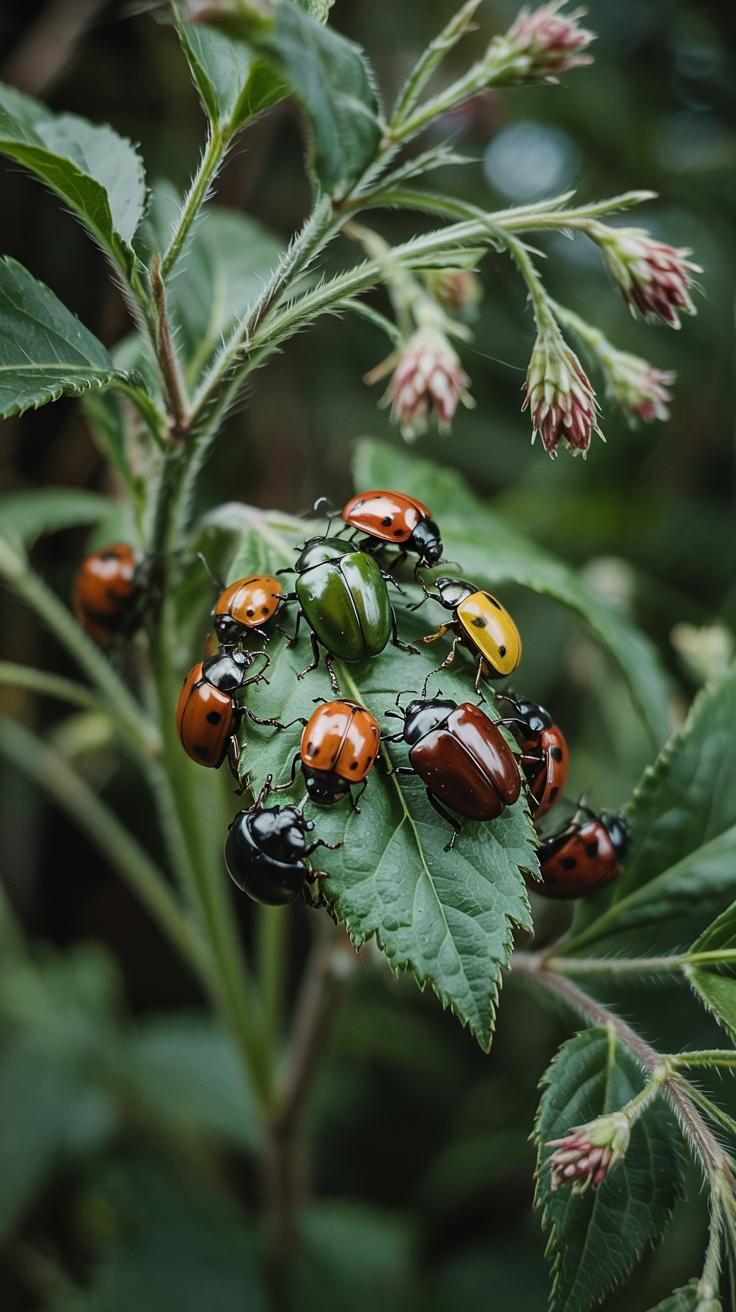
Ladybirds and small beetles serve as natural pest controllers in your garden. They hunt down aphids, mites, and other insects that damage plants. These tiny predators keep pest populations low, reducing the need for chemical pesticides.
Ladybirds, for example, can eat hundreds of aphids in a single day. This behavior not only protects your plants but also supports the balance of your backyard ecosystem. Besides controlling pests, these beetles contribute to biodiversity by serving as food for birds and other wildlife.
Have you noticed fewer pests where ladybirds visit? Their presence is a sign of a healthy garden that supports beneficial insects. Creating an environment that welcomes them helps you maintain vibrant plant life and a thriving ecosystem right at home.
Predatory Behaviors
Ladybirds use their strong jaws to catch and consume garden pests quickly. Aphids, tiny green and black bugs that suck sap from plants, are their favorite meal. A single ladybird larva can consume over 400 aphids before it becomes an adult.
Small beetles like rove beetles and ground beetles also hunt pests. They scurry under leaves and soil to find harmful insects. These beetles help keep your garden clean and healthy by limiting pest growth naturally.
How often do you see these hunters in your garden? Their active predation helps reduce pest outbreaks without chemicals. Encouraging these natural enemies is a smart way to protect your plants and the environment.
Habitat Features to Encourage Beneficial Beetles
To attract ladybirds and small beetles, provide diverse habitats. Ground cover like leaf litter and mulch offers shelter and moist places for beetles to thrive. Plant a variety of flowers and shrubs to supply nectar and pollen, feeding adult beetles.
Leaving some wild patches or planting native species also benefits these insects. Avoid using insecticides that harm beneficial beetles. Creating small rock piles or logs can add shelter and safe spaces for overwintering.
Do you think your garden has enough habitat variety? Simple changes can help maintain a steady population of beneficial beetles ready to act against pests. Building these habitats supports the whole backyard ecosystem at once.
Conclusions
Bugs in your backyard play crucial roles that often go unnoticed. From helping plants grow by pollinating flowers to keeping the soil rich and healthy, these tiny creatures contribute significantly to a thriving ecosystem. Knowing about these bugs can inspire you to protect and encourage their presence in your backyard.
Your backyard ecology benefits when you support diverse bug populations. Simple actions like planting native plants, reducing chemical use, and providing habitats can invite these helpful bugs to stay. As you nurture this natural balance, you’ll see your garden grow stronger and more resilient.


